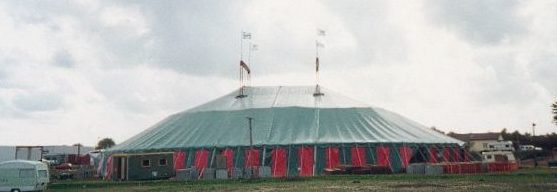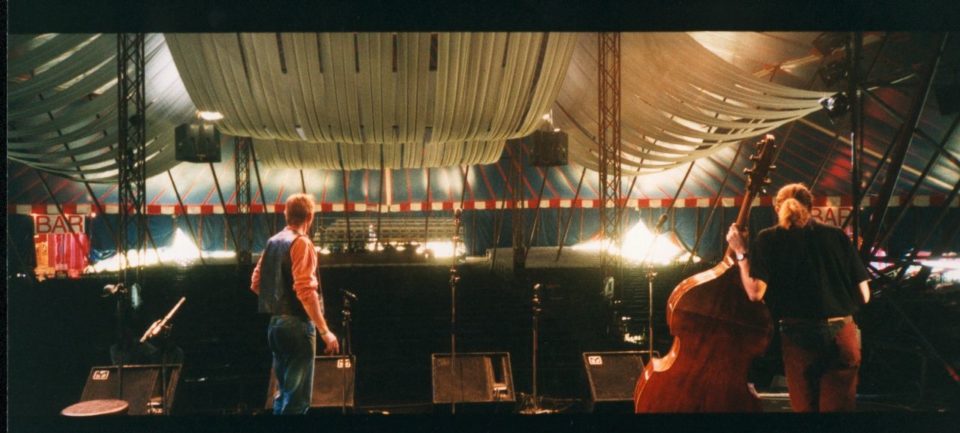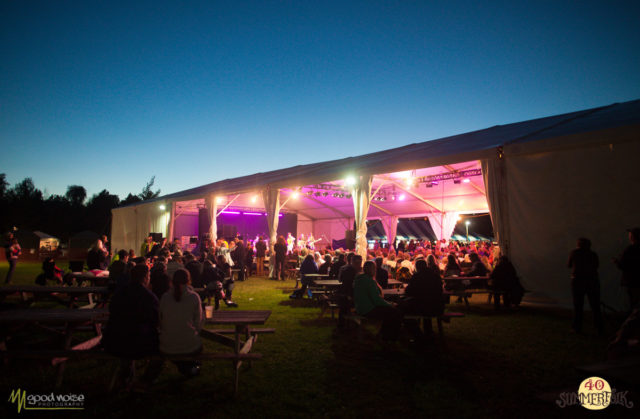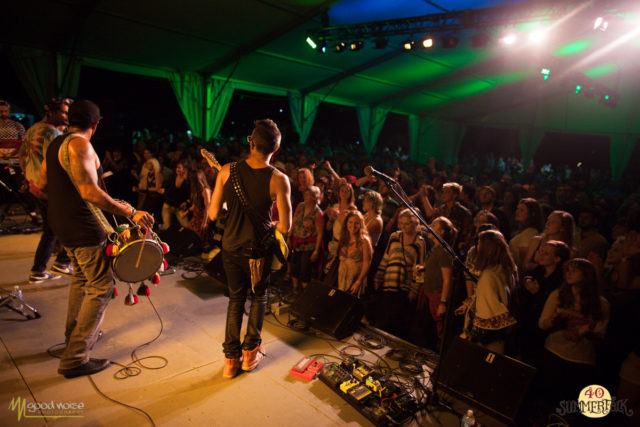By James Keelaghan
When you talk about folk festivals, music is essential, but really it’s all about the space.
In 1992, I played the Tønder Festival in Denmark for the first time. That festival was a week after the Lunenburg Folk Harbour Festival in Nova Scotia, so rather than go home to Calgary in between, I went directly to Denmark. I hung out in Copenhagen for a few days and then went down to Tønder.
It’s a small town — 6,000 people at most, but tens of thousands descend on it for a weekend of music.The town doesn’t have a concert facility for that large a crowd and so, in a square on a field at the edge of town, they set up two circus tents. One holds about 3,500 people and the other 1,500.
After I’d spent half a day seeing everything I could see in the town, I went to the festival office and asked if there was anything I could do to pitch in. They looked at me sideways and then gave me to a guy named Neils. He took me to the bigger of the two tents and I spent a pleasant day tying off the acoustic baffling that would be hoisted into the roof of the tent.
The tent was amazing! It was completely empty with no seating. The stage and sound gear hadn’t been installed. It was just a big canvas shell.Over the next two days, crews transformed it into concert hall. It was beautifully lit, had great sight  lines and a powerful, well run sound system.
lines and a powerful, well run sound system.
Ever since then, I have had my eye on the spaces that music happens in. A well thought-out site with great well-run venues are essential for a successful event.
One of the undoubted stars of Summerfolk last year was the new Down by the Bay tent. Since starting as Artistic Director of Summerfolk, I’ve wanted to bring in some clear span tents. I’ve seen them, and performed in them, at festivals in Europe and Australia but have never encountered them at a Canadian folk festival.
It’s taller and more open than the tent we used for years in that space. That’s because it has no interior poles. The structure of the tent makes it easier to hang lights meaning that we can light the roof of the tent and the stage without bringing in additional scaffolding. The result is a space that inspires and welcomes. It transforms the space into a proper concert hall.

I really wanted to have the tent in our licensed area. Veterans of the festival call it the “Beer” tent. We call it the “Down By the Bay” tent because “Beer” tent just doesn’t reflect all that goes on in that space. It’s a place for high-energy music — just ask anyone who danced to Delhi 2 Dublin or The Mackenzie Blues Band last year.

It allows for incredibly intimate moments as well. Last year’s “Tall Tales” workshop with David Francey, Steve Poltz and Donovan Woods brought the house down. During the songs, you could have heard a pint glass drop, it was so quiet.

On the Saturday of the festival, activity in the tent starts at about 9 AM as the stage crews arrive to ring out the sound system and prep the stage. Music starts at 11AM and runs straight through until until 1AM -– with the exception of a quiet hour between 6 and 7 so the crew can get dinner. Last year, on Saturday, twenty-seven acts played on the stage in fourteen hours.
We’ll do pretty much the same this year. One highlight will be Bruce Cockburn playing an afternoon workshop with Leonard Sumner and Lindi Ortega. On Sunday the tent will host an east coast kitchen party with Natalie McMaster, The East Pointers and Cassie and Maggie Macdonald. On both Friday and Saturday nights, the evenings traditionally end with sets that blow the roof off. This year, Blackburn, Gypsy Kumbia Orchestra and My Son The Hurricane will do the honours.
Down By the Bay has evolved into a second main stage at the festival. This year, by adding another section to the tent, we can have close to a thousand people under cover.
We now have the audience under cover at five of the six daytime stages. That’s not just because we want folks dry in case of rain.
The fact is, recently we have had more sunshine than rain at Summerfolk. In the past four festivals, we have only had one day of rain. The sun is becoming a concern for a lot of people and a shady place to listen to music is a great thing on hot summer afternoon.
We don’t worry about the sun as much at the other mainstage — the Amphitheatre.

That’s because we only run that stage at night. For the first few years of Summerfolk, the area where the amphitheatre is now was just a broad field. The amphitheatre was built in 1982. For 35 years, it’s hosted thousands of performers.
The stage, of course, is named after the late, lamented and much loved Stan Rogers Summerfolk loved Stan and he loved it back, setting the pattern for a relationship many performers have with Summerfolk.
An amphitheatre is not unique. What makes ours special is the backdrop. It’s a combination of sky, water, trees and a hint of the industrial. It’s easily one of the most beautiful backdrops of any festival in Canada.
You can enjoy our Summerfolk space at Kelso Beach Park on August 19, 20 and 21 this year.Advance tickets are on sale until July 31st and information can be found at summerfolk.org.